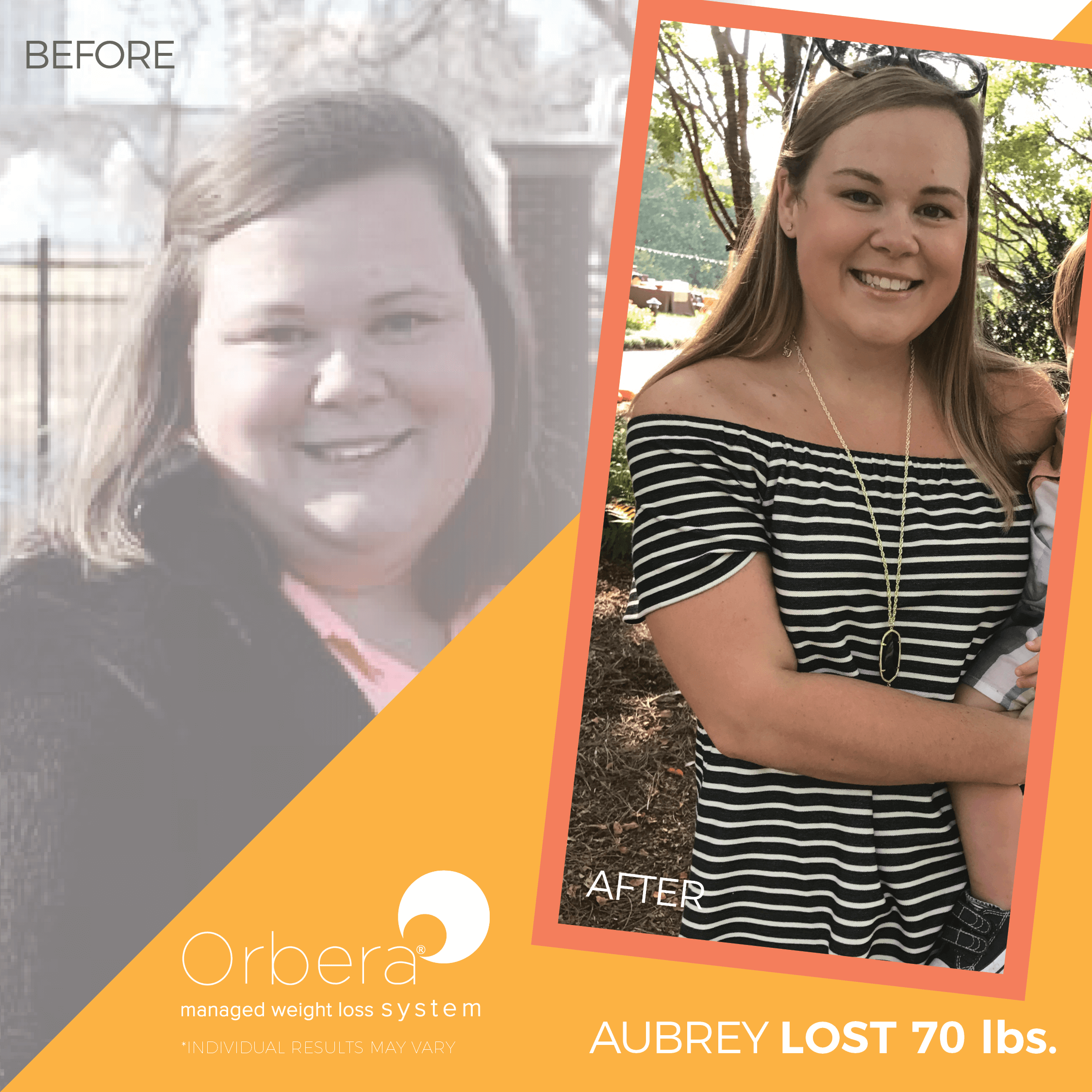
Experience real change with Orbera.
For many people suffering with obesity, losing weight is not as simple as just eating healthier meals and exercising. There are many procedures and surgeries that can help patients lose weight very quickly.
The ORBERA intragastric balloon is a non-surgical option that can help a patient lose weight:
- Without the long recovery time
- Without potential complications of a non-reversible procedure
CONTACT US TODAY
How Does the ORBERA Intragastric Balloon Work?
The ORBERA device is a durable balloon made of silicone. It is temporarily inserted into the patient’s stomach where it is inflated. The device takes up room in the stomach, helping individuals choose healthier portion sizes.
The procedure itself is completely non-invasive and requires no incisions. The patient is mildly sedated for the procedure, which is expected to last about 30 minutes. The silicone balloon is inserted through the esophagus and directly into the stomach, where it is then expanded. The results are instant, allowing the patient to immediately begin to experience the effects and give a boost to their weight loss journey. The balloon device is removed from the stomach after six months.


Who Qualifies For an Intragastric Balloon?
In order to qualify for an intragastric balloon procedure, the potential candidate must have a body mass index (BMI) of 30 to 40, depending on which secondary conditions are also experienced. They must also be over the age of 18 years.
Many approaches to surgical weight loss are only utilized when the patient is facing a serious weight-related health risk, such as uncontrolled diabetes, high blood pressure, or sleep apnea, all of which can be dangerous. The ORBERA balloon device is unique when compared to other approaches, because those who are not suffering from these and other comorbidities may still qualify for the procedure.
Recovering From the Procedure
Because the procedure is non-invasive, patients can expect to return home the same day, though it is recommended that a family member or friend be available to drive them home due to the mild sedation. Most individuals are recovered within a week following the procedure. Patients should expect a sore throat for the first few days as the balloon device is inserted through the mouth and throat.
Living With an ORBERA Intragastric Balloon
Many intragastric balloon patients experience a moderate amount of weight loss very quickly. Studies have shown that patients who utilize ORBERA lose approximately three times more weight than patients who utilize diet and exercise alone. However, it is important to note that improving diet and exercise are vital to losing the weight and keeping it off once the balloon is removed. Intragastric balloon patients need pair the device with a diet transition schedule to help them stay on track.
Advantages of the ORBERA System Over Other Weight Loss Procedures
While the ORBERA balloon system is only temporary, it has been demonstrated to provide significant results for those who are struggling with obesity. The procedure does not require any invasive surgery, so the recovery time is extremely minimal. Patients may expect to be on a liquid food diet for the first few weeks, but they may then return to their diet plan once the body has adjusted to the device. This means that patients can continue their exercise and diet plans as instructed without spending weeks being unable to be active. Even further, the balloon can always be removed if the patient does experience any complications, while other surgical weight loss approaches cannot be easily reversed.
Downsides to the Intragastric Balloon Procedure
There are a few downsides to the intragastric balloon procedure, though it should be noted that the downsides are not as potentially severe as they are for surgical weight loss options. When it comes to the balloon itself, there is a small risk that the balloon could cause a blockage in the stomach. The balloon is filled with a dye that will show up in the patient’s urine, so the surgeon can be alerted should the device fail.
An intragastric balloon patient may develop an intolerance to certain foods, especially while your stomach is adjusting to the presence of the balloon. The weight loss in general may be a bit slower than those who undergo surgical weight loss options. Further, the device is temporary, so it is possible to regain the weight once the balloon is removed. As such, patients will need to work with their doctor and continue to adhere to their diet and exercise program in order stay on track.




